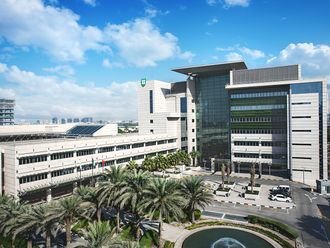
Dubai: If you have a chronic absenteeism among employees, better have your office’s indoor air quality checked.
Keeping your offices squeaky clean naturally — be it from seen and unseen pollutants — can result in healthier workers, higher productivity, and less absenteeism.
Telecom giant du has been observing this fact among its employees for the past five years after deciding to have its building’s indoor air quality monitored annually and introducing programmes tailor-made for their employees.
Du became the first company globally to receive the Underwriters Laboratories (UL) Building Indoor Air Quality (IAQ) Certification in April.
The certification states that du offices in Al Salaam Tower, Dubai Academic City offices in blocks 8 and 9 and Al Barsha Command Centre in Dubai, Abu Dhabi offices, and Fujairah Call Centre exceed the highest indoor air quality standards.
“Since 2010, du has monitored and measured its air quality annually to evaluate the various constituents that we are exposed to and breathe in, on a daily basis,” Abdul Hadi Alalyak, Vice-President of Asset Management of du, told Gulf News.
“We are all familiar with the concept of Sick Building Syndrome and, by proactively measuring its causes, we are able to control and eliminate many of the health-related problems.”
To get the certification, du retro-commissioned its buildings’ ventilation system to meet the standards set by the American Society of Heating, Refrigerating and Air-Conditioning Engineers.
Du’s facility management adjusted their air inlets to dilute indoor pollutants. Building insulation was checked and water leaks resulting in the difference in indoor and outdoor temperature levels were sealed and controlled.
The management also controlled pollutant levels by replacing existing filters with those with a higher efficiency rating.
“The UL certification was a way for it to meet the international benchmarks of a prestigious organisation. Ultimately, it was about keeping the best interests of our employees in mind as a healthy building equals a healthy workforce,” Alalyak said.
A two-year internal study within the organisation revealed a drop in absenteeism among their employees. In 2013, du’s overall lost time incident rate was 1.16 per cent, with a breakdown of 0.75 per cent for men and 2.28 per cent for women.
A year later, the overall rating dropped to 0.91 per cent, with men accounting for 0.94 per cent and women clocking in at 0.85 per cent.
“Our long-term goal is to increase productivity and reduce absenteeism through our wellness journey by understanding the sick absenteeism rates in relation to the building pollutant levels. Over the past number of years, absenteeism has reduced significantly,” Alalyak said.
“We are committed to ensuring our staff and visitors breathe the cleanest air, which is why we have invested a great deal of time into understanding these pollutants during the design stages.”











